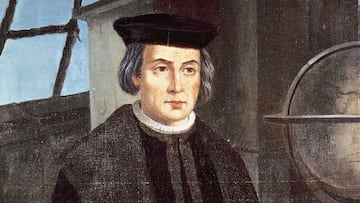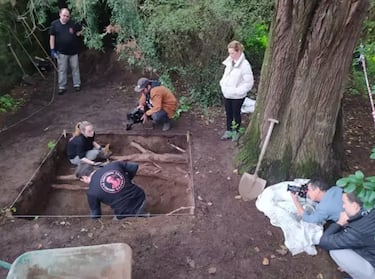Remains of possible descendants of Christopher Columbus found
A national investigation is trying to irrefutably prove that the explorer was from Pontevedra in the Spanish province of Galicia through genetics.

An investigation, which is based on the ‘Galician Theory’ hopes to prove the idea that Christopher Columbus was originally from the Pontevedra, has begun this week with the first excavations. In the first day, seven bones, ceramics and other objects have been recovered after reaching a depth of 32 inches in the old cemetery of San Salvador de Poio.
But the work at another, the San Martiño de Sobrán cemetery, in Vilaxoán-Vilagarcía de Arousa, has been complicated and will take longer than initially planned, since the researchers have found themselves on land where cement had been poured on top of the first layer, which is making the work in which the Colón Gallego association, the University of Granada and the production company Story Producciones participate more complicated.
The fact that the excavations are not as deep as could be expected has led researchers to believe that the earth was likely removed at some point for the transfer of the cemetery to the new location, which is why tombs have changed place more recently. Additionally, beyond the four bones found on Tuesday, seven different bones were found Wednesday, indicate coffins from previous exhumations and pottery that have not yet been dated.
The president of the Colón Gallego Association, Eduardo Esteban, explained this Wednesday to the press that there had been a “technical problem” in the opening of the grave of Juan Mariño de Sotomayor, so Professor José Antonio Llorente —one of the project’s researchers— will not travel to open the sarcophagus until next week, together with the German Immaculate Professor of Anthropology.

Columbus was Galician because "there is a lot of documentation" that supports it
The idea that Christopher Columbus was from Galicia, specifically from Poio (Pontevedra), is a “serious and consolidated” theory that, over the years, has been endorsed with “a lot of documentation,” according to Esteban assured on Wednesday. The investigations in the old cemetery of Poio are due to the “reasoning” that the Columbus clan must be buried there, whose prescence in Portosanto is known on the basis that if they lived there, they will be buried in that place.
Related stories
“It has been proven that he could be Galician because the documentation that exists is overwhelming,” one of the main defenders of the Galician origin of the historic Spanish conqueror once again told the press on Wednesday. “There is more than reliable evidence”, he insisted.
To these indications, the experts added that Columbus wrote numerous annotations and letters in Galician or that many of the names of places that were discovered on that expedition correspond to local names of places on the coast of Galicia. “We are closer than ever”, assured Esteban, to refuting the rest of the theories that suggest that the discoverer of America could have been born in Genoa (Italy), Barcelona or Mallorca.

